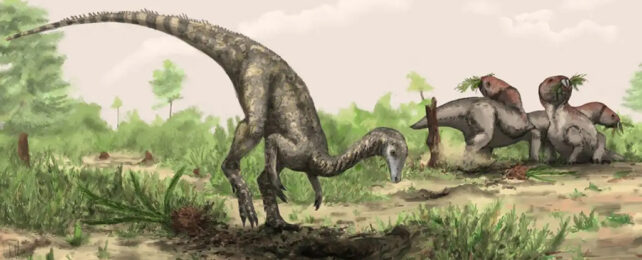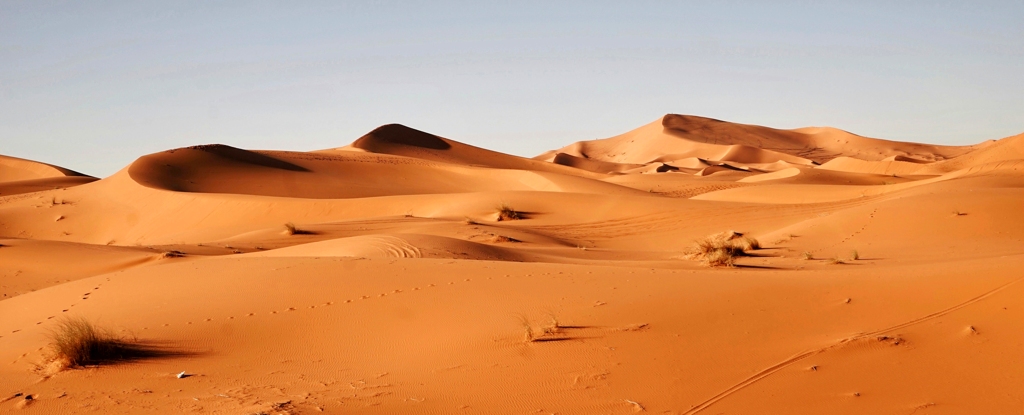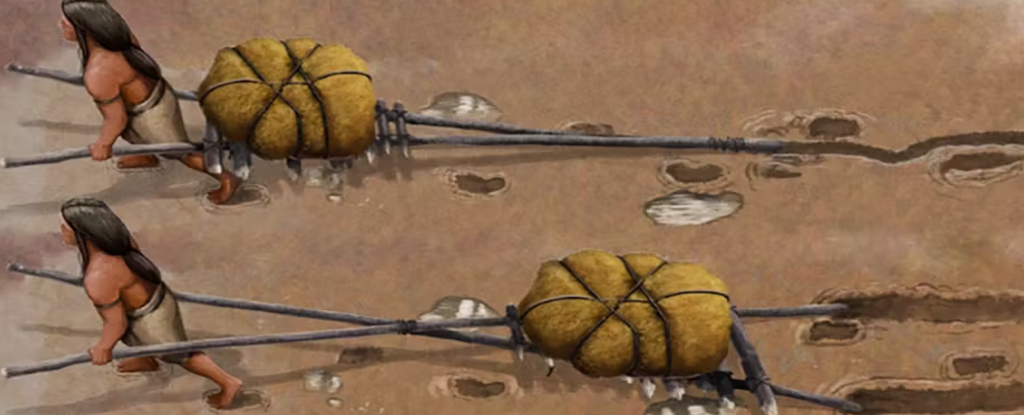Ancient fossils of the world’s very first dinosaurs may be buried in places almost impossible to investigate, according to new research from University College London and the UK’s Natural History Museum.
The oldest dinosaur fossils currently on record date back around 230 million years. These specimens, recovered from sites that were once part of Gondwana – the southern half of the late Paleozoic supercontinent Pangea – occupy relatively distant branches of the dino family tree, suggesting they had already been evolving and perhaps dispersing across the world for millions of years.
What’s more, the discovery of dinosaurs from that same period in what was the supercontinent’s northern landmass, Laurasia, has only upturned our understanding of dinosaur history further.
Convinced the true point of origin of dinosaurs is yet to be traced, paleontologists now suspect the starting point for all ‘terrible lizards’ could be hidden in some of Earth’s most hard-to-get places.
Between each hemisphere’s claims to the earliest fossils lies a massive gap in the record around the equator. In places where we have found no dinosaur fossils, it’s easy to assume that there were no dinosaurs, but that might not necessarily be the case.
The conditions have to be just right for fossils to be preserved in the first place. For trace fossils, like footprints, an imprint in soft mud must be filled in with loose sand that is then compacted. For a body fossil to form, the animal carcass must be covered with mud or silt soon enough after death that it doesn’t rot away completely.
But even if the perfect fossil formed, we might not necessarily find it, especially in locations that are difficult to reach. In a new paper led by University College London paleontologist Joel Heath, the authors point out that paleontological expeditions in the Amazon and the Sahara haven’t been particularly common, or easy-going.
And that’s a problem, because these are the places where they suspect we might find dinosaurs’ more ancient evolutionary history.

“Paleontological expeditions to these regions may be less common as a result of the harsh environment of the Sahara and inaccessibility of many areas of the Amazon,” they write.
“It is also well documented that socioeconomic factors and the legacy of colonialism, coupled with political instability, have likely hindered research efforts in these regions.”
Their study modeled the radiation of dinosaurs in reverse, using known dinosaur fossils, taxonomic data on both dinosaurs and their reptile relatives, and the geography of the period. Rather than assuming that places with no fossils equal places with no dinosaurs, these regions were categorized as having missing information.
And since we don’t really know exactly how the oldest known dinosaurs are related to each other, they modeled three different scenarios based on proposed evolutionary trees.

A low-latitude Gondwanan origin – for which proof may be lying in the Sahara and the Amazon – was supported most strongly by a model where silesaurids (which are considered more like dinosaur cousins than dinosaurs) are ancestors of ornithischian dinosaurs.
Ornithischians are one of the three main dinosaur groups that is oddly absent from the early dinosaur fossil record, but silesaurids as their ancestors would fill some of that gap.
Conveniently, low-latitude Gondwana is also the midpoint between the earliest dinosaur fossils in our current record.
“So far, no dinosaur fossils have been found in the regions of Africa and South America that once formed this part of Gondwana,” Heath says.
“However, this might be because researchers haven’t stumbled across the right rocks yet, due to a mix of inaccessibility and a relative lack of research efforts in these areas.”
These findings were published in Current Biology.





